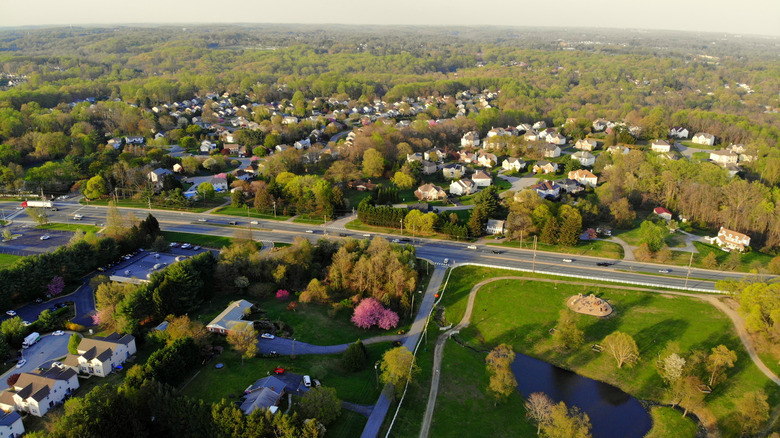These Are The Best And Worst Places To Live If You Have Asthma
Cases of asthma can range from mild to severe. Characterized by a narrowing and swelling of the air passages, the Mayo Clinic explains that asthma can impair breathing and lead to coughing, wheezing, and shortness of breath.
Smoking, pollution, or exposure to exhaust fumes and other chemicals can increase the likelihood of developing asthma. Because an asthmatic episode can be triggered by these environmental factors, certain areas of the United States may prove better or worse for those with asthma, depending on the presence — or lack thereof — of some of these elements.
Before breaking the list down by city, let's take a look at how asthma may be impacted differently between urban and rural settings. Studies have shown that prevalence rates of adult asthma and morbidity are higher within densely populated cities than in rural areas (via Reviews of Environmental Contamination and Toxicology). Scientists believe this may be because people in rural parts of the country may be exposed early on to nutrient-rich soil, animals, and unpasteurized farm milk, all of which are thought to help build immunity against the development of asthma (via The Journal of Allergy and Clinical Immunology). Conversely, those in populated cities are more readily exposed to high levels of automobile emissions and dust mites.
How asthma rates differ across states
It's important to acknowledge that asthma prevalence rates are not only influenced by environmental factors, but by societal factors as well. Research published in Reviews of Environmental Contamination and Toxicology in 2013 shows that the development of asthma is linked to low socioeconomic status and a lack of access to healthcare. In addition, 2011 research on the development of asthma in children published in The Journal of Allergy and Clinical Immunology cites that lack of access to nutritious food options as well as limited exercise opportunities can also influence asthma rates.
According to the Asthma and Allergy Foundation of America, cities most likely to aggravate allergy symptoms include Birmingham, AL; Oklahoma City, OK; and Allentown, PA. Additionally, New Haven, CT; Milwaukee, WI; and Dayton, OH are among those with the highest rates of asthma-related emergency room visits. Lastly, due to high poverty rates, poorly maintained rental housing, and high levels of pollution, Philadelphia, PA; Baltimore, MD; and Richmond, VA also rank among the top cities most vulnerable to asthma.
So which cities are most likely to provide asthma symptom relief? According to National Jewish Health, the top five best places to live for those with asthma include McAllen, TX; Houston, TX; Cape Coral, FL; San Jose, CA; and San Antonio, TX.


